At this time of year, from the end of March and into the first week of April, it’s “Spring Break” time. Students and families travel far and wide to places like Disney World or maybe a tropical island. And others stay home. Sometimes it might be because trips are too expensive, gas is too expensive for road trips, or sometimes people just like to stay home and relax. For those who are home right now and relaxing, how about learning to cook some classic French dishes? Let’s have our own little cooking class right here on the blog! I will have a new French cookbook to tell you about each day this week. Paris may be too expensive, but this blog is free and your library is free. Since the books I will be introducing this week may not be at your fingertips, I am hoping you will be able to find them at your library and cook and learn along with me this week. This week’s blogs will have new information each day first thing in the morning, so you can have time to find the book and learn a new dish to cook for dinner each night.
At La Varenne in Paris, beginners are as welcome at this famous school as more experienced cooks. This book is like taking the comprehensive basic course and going to a new level of proficiency in your own kitchen. Start with the basic lessons, which are easy to follow and understand. As you proceed with each level, you will learn the building blocks of French cuisine and be able to achieve new creations in the kitchen that will surprise you. There are 35 individual lessons in the book, organized by subject, and explained to you just as La Varenne’s chefs would explain it to you if you were in Paris. Once you learn the fundamental procedures for the basics that occur over and over again in French cooking, you will end up having a thousand dishes at your fingertips.
The 35 lessons are divided into three categories: Technique, French Creations, and The French Touch. The first level of techniques will teach the basic cooking methods: sauteing; roasting; braising and stewing; broiling and grilling; deep frying; boiling, poaching, and steaming; boning; cooking in a water bath; making stocks; and working with gelatin. For example, in deep frying, you can learn how to make all the potatoes shown here, from left to right: “Mignonette,” which are 1/4″ sticks the same length as straws; “Gaufrette,” which are lattice rounds cut with a mandolin slicer, “Pont Neuf,” which are 1/2″ long potatoes, so called because they were sold on the Pont Neuf in Paris; “Straw,” which are the finest possible strips about 3″ long; “Chips” are wafer-thin rounds, and “Matchstick,” which are julienne strips with a little more body than the straw potatoes. Whew! And that’s just a few potatoes! But aren’t they beautiful? So you can see how many different ways there are to deep fry a potato in the French manner.
If you are preparing a chicken to grill, there are step-by-step instructions with photos, and suggestions on which sauce to learn for serving with the chicken.
The next category is “The French Creations.” This is the largest category where you will learn the uniquely French creations that are also the foundations of the cuisine: consomme; pates and terrines; mousses, mousselines, and quenelles; souffles; flour-based sauces; hot emulsified sauces; crepes; choux pastry; puff pastry; pate brisee and pate sucree; yeast doughs; genoise and biscuit; meringues; frozen desserts; petit fours secs; and confiserie. Hollandaise sauce, as seen below is a hot emulsified sauce, and an entirely French creation. Making Hollandaise scares a lot of people, but it can be mastered after reading and following the easy directions! The photos also make it easier to follow. Hollandaise is wonderful on poached fish, asparagus, artichokes, and eggs.
One of the yeast doughs that people find challenging is brioche dough. Brioche, more than any other bread, puts butter in the limelight. It is deliciously soft, buttery, and heavenly. There is nothing like it. In Lorraine, a braided brioche is still served as part of baptismal celebrations.
Learning to cook in a water bath will enable you to master desserts such as “Creme Caramel,” and “Petite Pots de Creme.” Look at that gorgeous caramel topping dripping down the sides. The three flavors of the pots de creme are, from left to right, Grand Marnier, caramel, and chocolate.
The last category is “The French Touch,” which is the special French way with foods common to all nations. These include: soups; salads; first-course vegetables; eggs, cheese, vegetable accompaniments; potatoes, pasta, and nuts. The part of this category I will be working on is eggs. I love eggs. Under the omelet (omelette) instruction it states, “It is said to be considered an expert, a chef must make omelets every day for three years.” I don’t think I’ll go that far.
This book is the perfect one to begin our week of French cooking. It is such a valuable resource for learning. I hope you already have it, or can find it at your library, or buy on Amazon.com. This cooking course will give you confidence after understanding French methods and techniques, which will allow you to create something out of a Paris kitchen, without leaving your home.


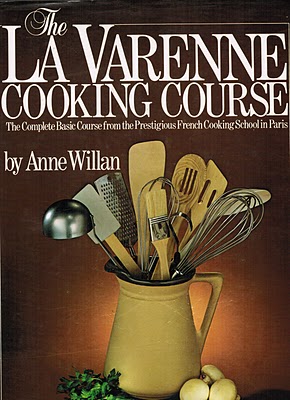
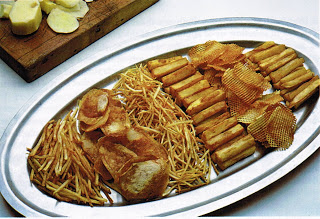
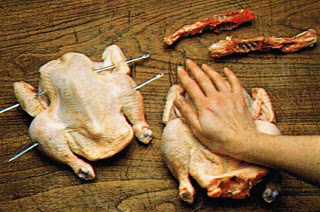
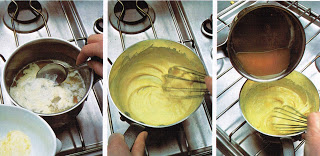






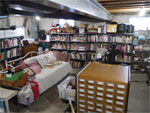

This is going to be a fun week!
I’m definitely in French food mode today. It’s my husband’s birthday. He’s requested Coq au Vin (Julia Child’s recipe) and Reine de Saba (her chocolate almond cake) for his celebration dinner. And French wine to accompany. I’ll be spending the afternoon in the kitchen.
What a lucky guy! The menu sounds perfect. Have a fun day in the kitchen!